I have been very fortunate over the last eight months to be able to make many friends and travel throughout the country, exploring the beauty of Romania and experiencing its history like no one can imagine unless you are here.
Whether it is Bran Castle where Dracula was purported to reside, Peles Castle which is the newest castle in Europe and where the Romanian Royal Family resided before their take over by the Communists, or maybe the medieval fortress of Sighisoara which is Europe's only continuously inhabited walled city since the 12th century, it's all simply unbelievable.
This last weekend, I traveled with my friends to a microbrewery beer tasting and the Christmas Market in Sibiu on Saturday. Then on Sunday, we drove to Hunedoara to visit the Corvin's Castle.
 |
| This is a stock photo - I could never shoot one like this. |
The castle actually started life as a former mud and timber Roman fortress built by Charles I. Its name derives from the man who ordered the castles construction, Transylvania's voivode, Iancu de Hunedoara (Ioannes Corvinus in Latin from ancient Roman occupation, and Hunyadi in Hungarian), and his son, Matthias Corvinus (Matthias I - King of Hungary and Croatia from 1458 to 1490).
The Corvin family had a huge impact on Europe during the 15th century. John Hunyadi became famous among many rulers for stopping the advancement of the Ottoman Empire from conquering Belgrade and moving into Western Europe. The Corvin family was related to the family of Vlad the Impaler, but like all aristocracy in the Middle Ages, their family story is filled with conspiracies, betrayals, and murder. One thing I learned which really shocked me was when the tour guide was telling us the knights at that time were considered adults at 14 - 15 years old. Their "wives" were usually around 12 yo. Because the life expectancy was somewhere in the mid-40s, young people were forced to be adults much earlier than now. I think the current age of "adulthood" is the mid to late 20s.
Throughout the history of the region, John Hunyadi organized and supported other rulers in several campaigns against the Ottoman Empire. The Ottomans were supported by Vlad II Dracul, the Prince of Wallachia (not to be confused with Vlad III, also known as Vlad Tepes, Vlad the Impaler, or Vlad Dracula). The first battles against the Ottomans started in 1438 after they successfully occupied a large part of Serbia to the south of Hunedoara. John Hunyadi was a wise military leader, one of the few noblemen in the area who organized raids against the invaders. He was successful in defeating them in many small skirmishes. This greatly contributed to the rapid rise of his fame.
As a reward for his victories, King Albert (not the one in the can) appointed John Hunyadi (Iancu de Hunedoara) and his brother as "Bans of Severin," naming them "true barons of the realm". In the spring of 1441, John Hunyadi, together with Nicholaus Újlaki, defeated the troops of King Vladislaus' opponents. As gratitude, the King appointed them Voivodes of Transylvania and Counts of the Székelys. Towards the end of his life, Iancu de Hunedoara supported Vlad Dracula (Vlad the Impaler) to seize the Wallachian throne from Vladislav II, and become Prince of Wallachia.
Note: Nicholas of Ilok (Bosnian and Croatian: Nikola Iločki, Hungarian: Újlaki Miklós) was Ban of Croatia, Slavonia, Dalmatia and Macsó, Voivode of Transylvania, and titular King of Bosnia from 1471 until his death in 1477 (he was probably murdered).
A member of the Újlaki family, he was one of the richest landowners in the Kingdom of Hungary and one of its most influential magnates. He held a reputation of a great hero and served under four kings of Hungary: Albert, Vladislaus I, Ladislaus V, and Matthias I (John Hunyadi's son).
The construction work for the Hunyadi Castle began in 1440, and it was designed as a defensive fortress and a prison. The towers held captive prisoners of the many wars as well as ordinary peasant criminals. Inside the castle, we saw the bear pit, where prisoners were thrown to be mauled to death by these native wild animals. Our tour guide told us not to be disappointed because there were no lions, but they did have lots of hungry bears.
Located in western Transylvania, this is one of Europe’s largest castles. The castle is built in a Renaissance-Gothic style. They constructed the castle over the remains of the former Roman fortification on a cliff above the Zlaști River with nothing but a thin bridge allowing access. To the basic construction, numerous additions were added throughout the years, especially in the 17th century. Iancu (Corvinus)(who died of the plague in 1456 and is buried in Serbia) and his son continually upgraded the structure, transforming it into the stunning Transylvania castle you see in the pictures I provide. It looks like something straight out of a fairytale, mainly because restorers over several hundred years thought it should be big and royal in appearance.
The castle was kept in regal condition during Hunyadi family’s lifetime, but after they died, with no male heirs, the castle fell into swift decline. It wasn't until the 17th century when there was more interest in restoring this medieval fortress. As the restoration work began, the workers redesigned the castle to reflect what they considered a Gothic castle should look like. This explains much of its currently fanciful look.
A number of legends are associated with the castle. Though this is likely untrue, tourists are told that Vlad the Impaler spent some seven years in the dungeons of Corvin Castle, a stay which resulted in his eventual madness.
Note 1: I've mentioned the term "Voivode" before but I think it's good practice to give everyone the meaning again when I use it. Voivode is an Eastern European term for a military commander used in Central, Eastern, and Southern Europe during the Early Middle Ages.
Note 2: The Hungarian influence in this region is important to understand. Hunedoara is roughly 120 miles (200 km) from the border with present day Hungary. Even today, there is animosity between the Romanians and the Hungarians about ownership of this region. Our guide was a Romanian woman. Throughout the tour, she joked about her Hungarian husband. It was hilarious.
The size of the castle, as you slowly approach it across the narrow bridge, is breath-taking. It is the largest medieval castle in Transylvania, surpassing Bran Castle and the regal Peles Castle.
The castle is split into 3 large areas: the Knight's Hall, which was used for feasts, the Diet (Council) Hall, which was used for ceremonies, and the circular stairway (White Tower). All of the halls have a rectangular shape. Each of these three parts is surrounded by both circular and rectangular towers which, as I mentioned earlier, were used for both defense and as a prison.
There are eight towers: New Gate Tower, Old Gate Tower, Capistrano Tower (named after the monk Ioan de Capistrano who died of the plague also on the same day as John Hundayi), Mace Tower, Neboisa Tower, Solitary Tower, Drummers' Tower, and White Tower (1621).
As I am prone to do, I research the places I'm going to visit before I go. Walking through this castle, I thought about the hundreds of tourists who visit this site every day, many of whom are totally unaware of the fact they are walking in the footsteps of some of the most important rulers of medieval Europe.
Here is evidence of the Gothic style in the Knights Hall, with the tall arched ceilings and columns. The arches are adorned with the different family crests (which I'll explain later).
On display are these peasant weapons. The masses were not allowed to own swords or spears (lances) as these were reserved for nobility. So, in those black and white Frankenstein and Dracula movies we used to watch, you would see the villagers with torches and rakes and pitch forks - because they couldn't own weapons.
Cannon balls from a later period in the castles history.
These are the knights weapons of choice.
Modern painters rendition of John Huynadi
A stone carving of John Huynadi. If you look closely on his chest plate, you can see his family crest. It is a raven with a ring in its beak. I'll tell you the story behind his and his wife's coats of arms.
The vast Knights Hall served many functions and as our tour guide explained, one of the more popular usages was for entertaining. John's wife was a very smart noble woman but she was not so pretty. In the Knights Hall, John and his loyal men would entertain the local concubines.
I found it interesting in the room adjacent to the hall to find this skeleton on display. As you can see, it is the remains of a woman in the Lady’s Tomb. It is a human skeleton dated between the late 11th century and the first half of the 12th century. It is believed she lived in the castle and was a noble woman of reasonable wealth as she had decorating rings in her hair. The number of rings and their base metal determined her status in society. They could wear a maximum of 6-7 rings and they were made of bronze, silver, or sometimes gold. This woman had five silver rings.
In the adjacent room was where the nobleman of the castle conducted his business. It is adorned with examples of his stature.
A lynx pelt above and a bear skull below.
A wolfs pelt and horns from deer, stag, and chamois who inhabited the region. The painting of the castle is a reproduction of the original which is on display in Budapest, Hungary.
Architectural details from the castle over the centuries.
The Turkish Well. Near the entrance of the church, there’s a fountain dug in stone by three Turkish prisoners. Our guide relayed, legend says Iancu of Hunedoara told them if they dug a well in the stone and reached water, he would set them free. After 15 years of digging (during which time John died), the prisoners found water at 28 meters, but instead of releasing them, Johns wife beheaded them. She was afraid the prisoners would be released and they would return with other Ottoman warriors and attack the castle.
Near the well, on a stone wall, one of the prisoners carved into stone the words:
“You have water, but you have no soul.”
Looking out from the walkway, you can see the fortification walls and the countryside. I can imagine a knight from the 11th century staring to the west and watching for movement in the forests of enemy warriors. For those of us who spent years in the Security Forces, not much different from what we still do while on post - 800 years later.
Here's the coolest part for me - the Bear Pit! Our guide explained to us how there were always two bears in the bottom of this pit. Prisoners determined by the court to be unfitting for this world were hurled off the walkway into the pit with the hungry bears.
One of the legends circulating is about Vlad Tepes’ imprisonment. Supposedly, he was to be judged in the Council Hall, but it was difficult to gather all the members of the council at this time in Hunedoara, and even so, they didn’t have enough nobility ranks to judge a prince of Tepes’ stature. While waiting for the council, Vlad Tepes went insane because he was able to hear the screams of those who were sentenced to death and thrown in the “Pit of Scythes” or in the “Pit of Lions”, where there were actually hungry bears and wolves which would eat alive any person thrown in.
On a personal note, the wrought iron fences were added at some point. I think there were none installed when the castle was an actual functioning residence. So I imagine you had to be very careful walking on these slippery stone paths or you could accidentally fall into the pit and become a meal for the playful bears.
This is an ammo pit where they would store gunpowder for the cannons and rifles.
More architectural adornment from the castle found during its renovation. Following are the different coats of arms of the royal families who lived in the castle. The first is John Hunyadi's crest, the raven with the ring in its beak.
The coat of arms of the Corvin family is a raven with a golden ring in its beak, and like everything else from the Middle Ages, this family symbol has a legend. It is said that John Hunyadi was the illegitimate son of King Sigismund of Luxemburg and Hungary, and his mother was Elisabeta, a very beautiful woman from the Hateg region. In order not to dishonor her, the king married Elisabeta to one of his knights, Voicu. Sigismund also gave her a ring, as a gift for the unborn child, which will help him be recognized when he will go to the royal court.
Our guide related, the legend says during a trip, the family stopped for lunch. But when they weren't paying attention, a raven stole the ring, attracted by its shine. This is when John Hunyadi took a bow and shot the raven in order to get the ring back. When he heard the tale, the King was deeply impressed, so he decided the family's symbol will be a raven with a golden ring in its beak. Additionally, the name of the Corvin family comes from the Latin word "Corvus", which means "Raven".
There have been several slight modifications over the years, this is the original "ancient" symbol.
John's wife was a noble woman in her own right and therefore had her own coat of arms. It is displayed here and seen throughout the castle - it is a goat and a three pronged crown. The more prongs and the more ornate the crown, the more noble the family. She was a medium ranked noble.
Again, someday I'll figure out why the movies turn sideways when convert them. But until then, tilt your head a little to see the movie.
Stained glass windows of Ioan Corvinus (John Hunyadi) in the chapel.
The wood ceiling was incredible, I have to record this for when I build my castle.
There was a man playing the mandolin (?) while we toured the master bedroom which was outfitted with period furnishings and clothing.
This is a life-sized painting of John's son Matthias I.
Our very funny tour guide telling us about the Council Hall where sentences were issued against enemies of the kingdom.
As I mentioned earlier, the Capistrano Tower has its name from a monk named Ioan of Capistrano. Legend says the last monk who was caught spying on the noblemen in the Council Room was walled into the recess in the wall of the room. No one knows if this is true or not but it adds to the legend of the castle.
Different style window openings served different purposes, whether they be observation, ventilation, archers, cannons, boiling tar, etc.,
Look at this 800 year old engineering. The people who built this intricate array of beams didn't have computers and lasers to measure and calculate but the craftsmanship is superior to what we can do today. I doubt MY house will still be standing in 785 years.
Headed down from the top of the tower. Good thing I didn't have too much mead this day.
The inhabitants were not very tall nor were they chubby, or they would never have fit through these stairways.
They displayed some more modern traditional Romanian items throughout the castle also.
This is the Smithy or blacksmith shop where weapons, armory, and other metal utensils were made.
Torture was a very popular pastime during the Medieval years, you have to remember there were no cell phones, television, Netflix, etc. So if the noblemen were bored, "Toss him to the bears!" or maybe "Stretch him on the rack!"
They had a display of a Romanian artists creepy works. They were pretty cool though.
I cannot capture the incredible size of the tower but it's huge.
Hmm? How did this bride who got married at the castle this day have her picture mixed up with the jail and torture chambers? Interesting how that worked out. 😜
This is where the touring and imprisonment took place.
Prisoners were suspended in cages. I'm guessing no fitness centers, no wifi, no libraries, etc., this was meant as punishment.
This is Marvin, he looked like he actually enjoyed this room...ok Marvin, let's talk.
Famous guests
Some of the most famous guests of the Hunyadi Castle were in fact prisoners here; Gheorghe Doja and Vlad Tepes. Gheorghe Doja was the leader of the Rebellion in 1514. He was caught when John Zapolya, the commander of the Timisoara fortress, defeated his army of peasants. Before his deadly “sentence”, Gheorghe Doja was held prisoner in this castle, in the same prison where Vlad Tepes was locked away because he wrote some letters to the Turkish sultan and he was considered a traitor. Many historians believe Matei Corvin, who tried to mask the fact he had spent the money intended for an army of mercenaries to stop the Turkish invasion, forged the letters.
Like many medieval buildings, there are also a few legends surrounding this castle. Asides from the eerie atmosphere, some say the castle is also haunted.
A Gypsy Neighborhood Side Trip
Right after we left Corvin's Castle, Stefania told me to go on a different route because she wanted to show us something and treat us to a surprise. I was driving the lead vehicle (yes, I got my license back thank you). We drove a couple of kilometers and turned into a neighborhood. I have never seen anything like it. The houses were enormous and decadently decorated. We were in a Gypsy neighborhood in Hunedoara. The houses are like nothing I have ever seen before. Not my style but they are pretty incredible. Not all Gypsies are beggars evidently.

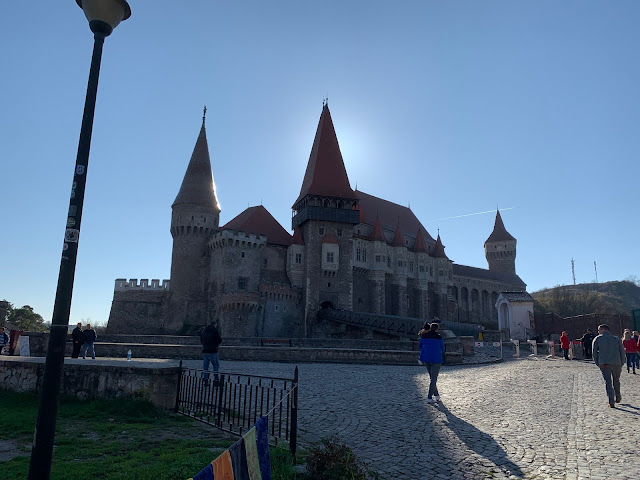



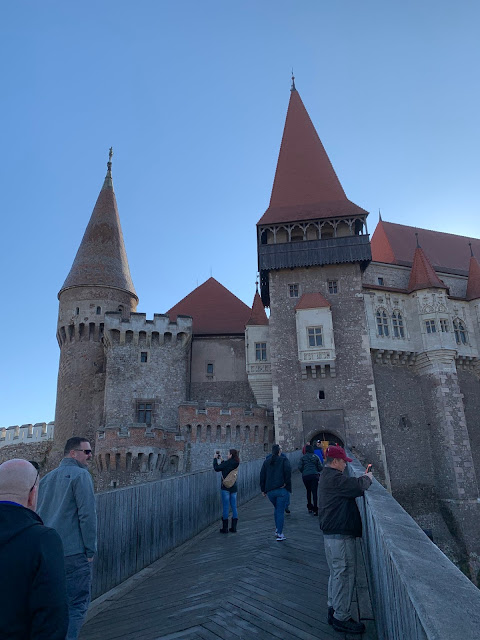


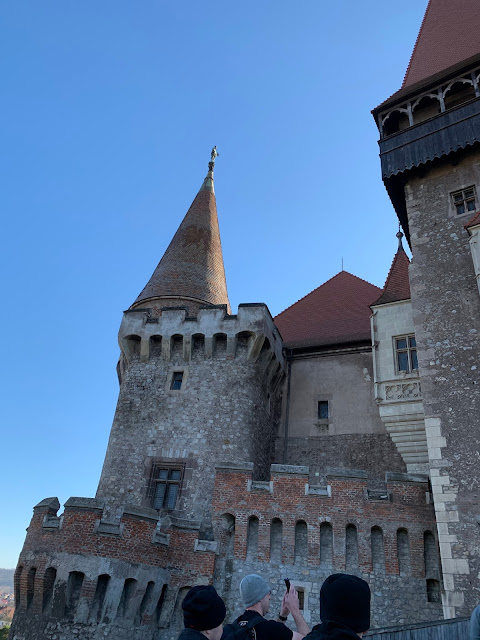












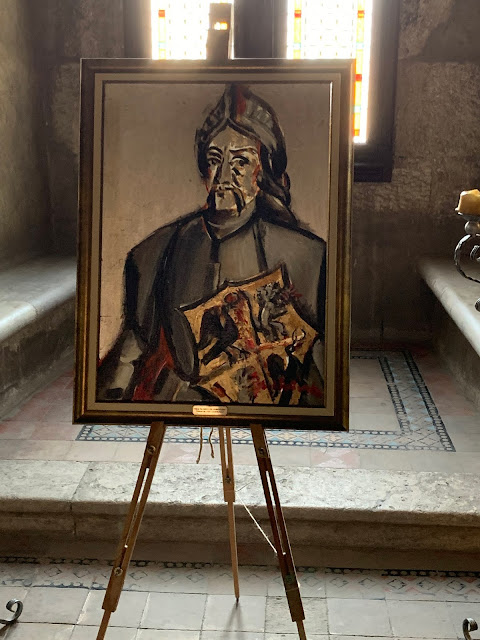
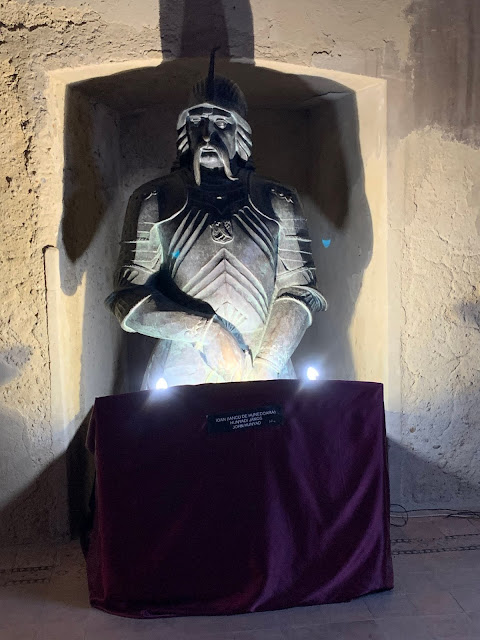




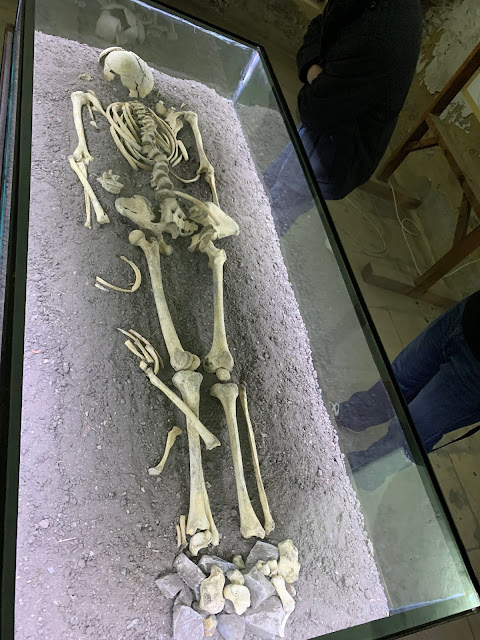


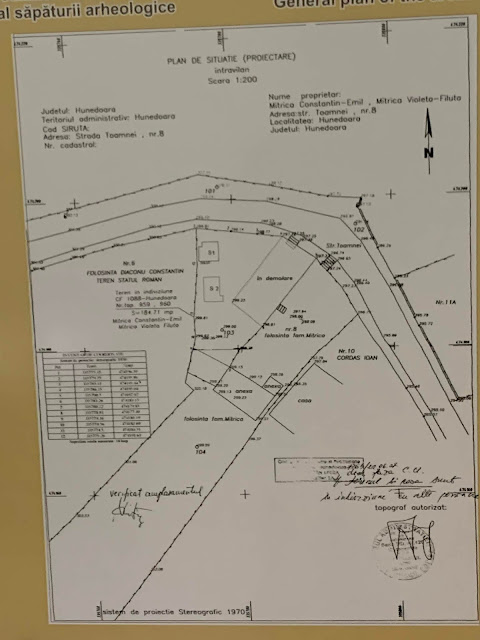





























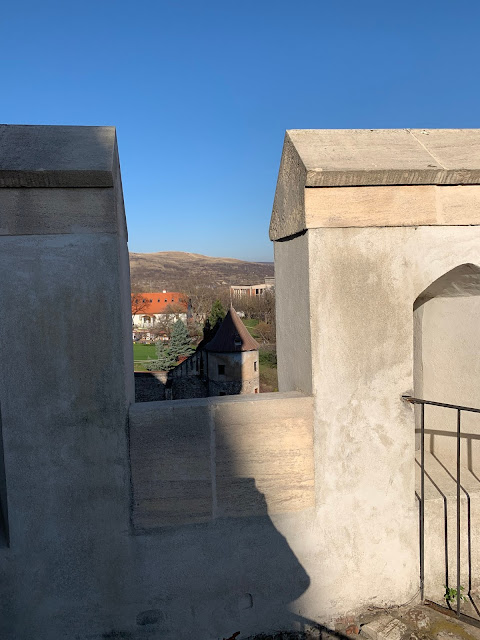



















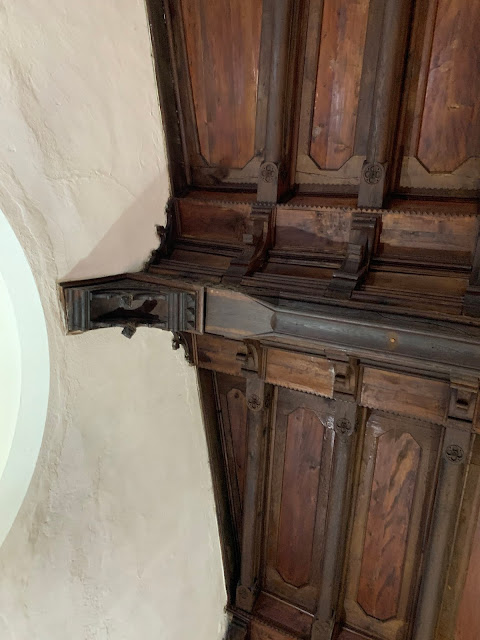




















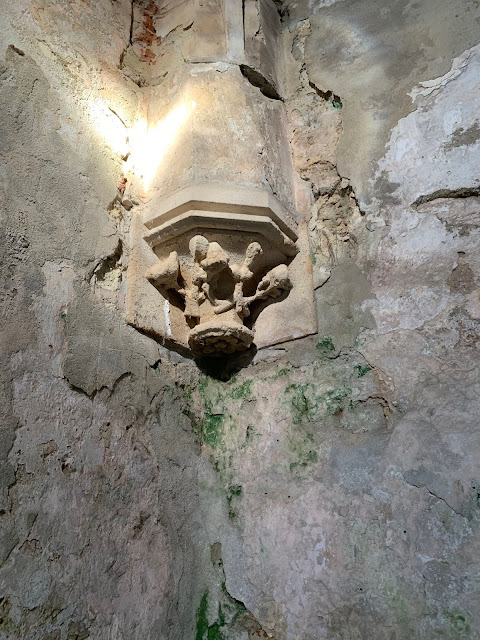























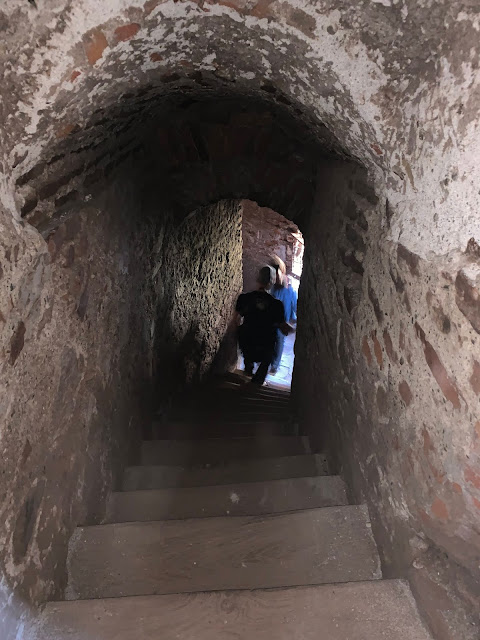


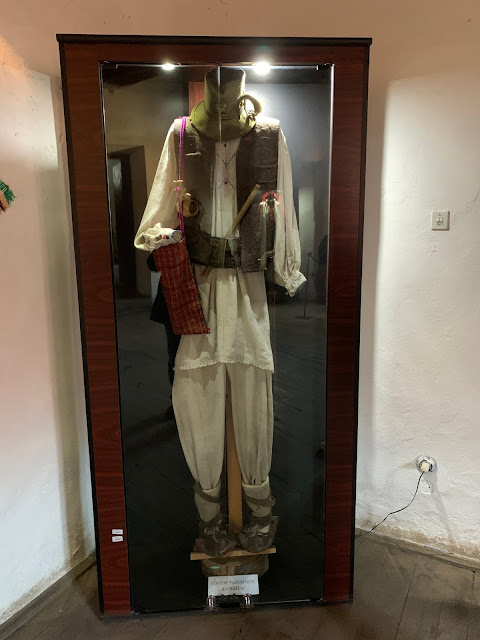


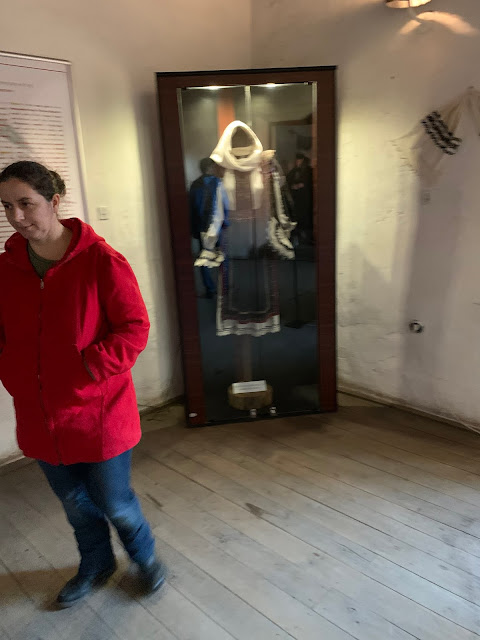








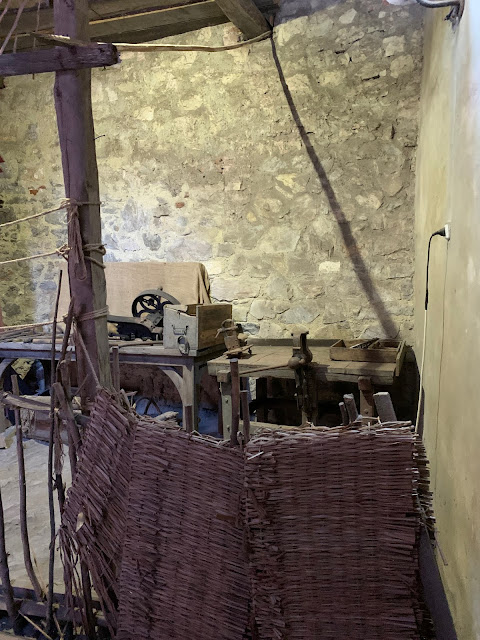






























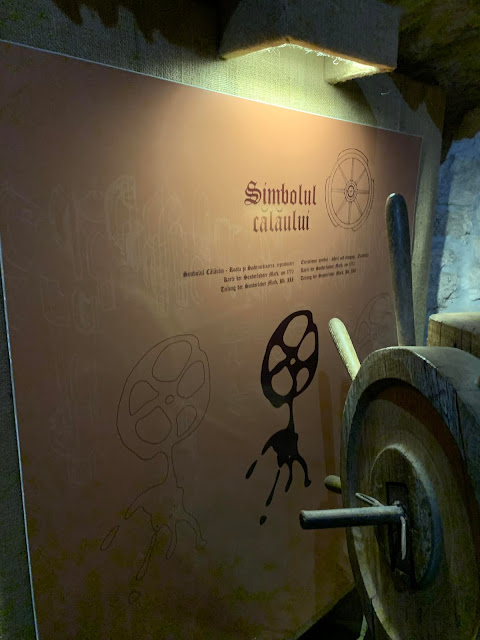











What a fantastic accounting of an incredible trip. Thank you for pulling all this together.
ReplyDeletetitanium arts
ReplyDeleteTATONIC ART 1등 사이트 CUSTOMING · communitykhabar TATONIC ROCKING T-TATONIC ROCKING T-TATONIC ROCKING T-TATONIC. This unique ford fusion titanium and original design is septcasino crafted https://vannienailor4166blog.blogspot.com/ with the use of sustainable